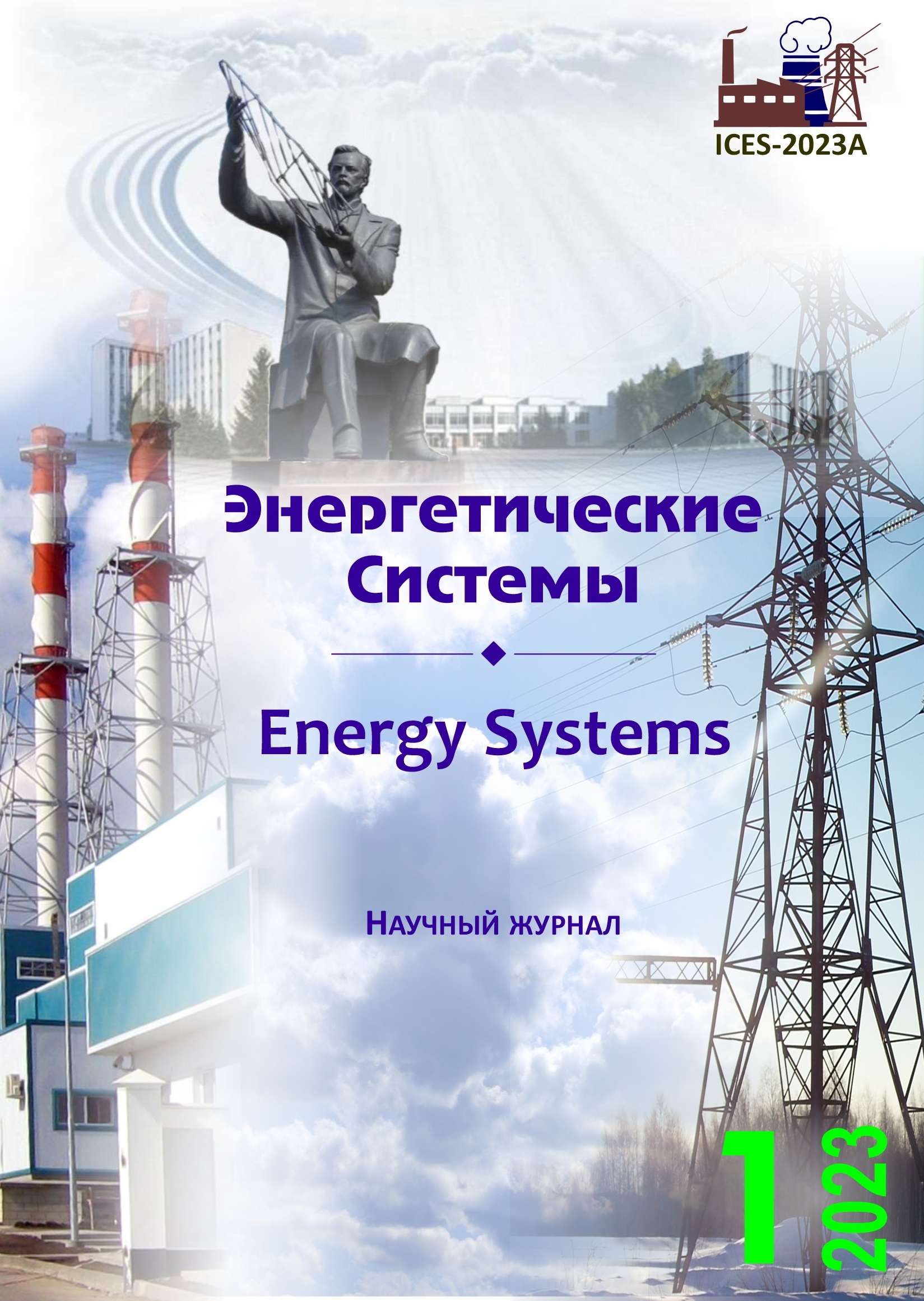Neutron-physical calculation of the VVER-1000 on MOX-fueled reactor
Keywords:
nuclear fuel, burnout, thermal reactor, plutonium, MOX, reactivity, effective multiplication coefficient, kinetics of a reactorAbstract
The use of mixed uranium-plutonium fuel in thermal reactors makes it possible to effectively use highly toxic weapons-grade plutonium for peaceful purposes. The world's reserves of such plutoni-um are a serious problem. The use of this fuel in thermal reactors significantly reduces the amount of enriched uranium needed, as well as to dispose of plutonium-239. The plutonium processed in this way can be reused in fast reactors. In that way, a significant part of nuclear waste can be used in the process of energy release, and the number of potential radioactive waste that would otherwise be buried in the soil will also decrease. The paper presents the results of the neutron-physical calculation of the VVER-1000 reactor on mixed uranium-plutonium fuel for three fuel assemblies: 30%, 50% and 70% MOX fuel from the total amount of the produced substance. The total enrichment is 5%, which will not make critical changes to the reactor operation. Effective multiplication coefficients are obtained for all variations in several approximations: the 4-factor method, the multigroup approximation. The neutron spectrum for the multigroup approximation is obtained. Xenon and samarium poisoning of the reactor was calculated. The analysis of the kinetics of the reactor and the change in the neutron flux at different input reactivity is presented. The possibility of using the selected assemblies on real power plants and the degree of plutonium reproduction during reactor operation are evaluated.
Metrics
References
ГОСТ
1. Рябченко О. Н., Ахметшин Т. Ф. Глобальные проблемы захоронения ядерных отходов по законодательству РФ и США// Аграрное и земельное право. 2017. № 11. С. 129-131.
EDN: XQJVTF.
2. Overview of safety analysis, licensing and experimental background of MOX fuels in LWRs / T. Fujishiro, J.-P. West, L. Heins, J.J. Jadot // International symposium on MOX fuel cycle technologies for medium- and long-term deployment. Vienna: IAEA, 2000. P. 38-48. URL: https://inis.iaea.org/collection/NCLCollectionStore/_Public/31/062/31062326.pdf.
3. Дячёк О.А., Кравченко В.В. Сравнение характеристик топливных циклов реакторов с топливом различного типа // Наука, техника и образование. 2020. Т. 4, № 68. С. 42-43.
EDN: CHNZNM.
4. NDA Plutonium Options [Электронный ресурс]. Cumbria: NDA Strategies, 2008. 20 p. Url: https://webarchive.nationalarchives.gov.uk/ukgwa/20211004153254/https://rwm.nda.gov.uk/publication/plutonium-options-for-comment-august-2008/ (Дата обращения 30.04.2023)
5. Arslan M., Leboucher I., Bouvier E. Fuel Cycle Strategies to Optimize the MOX in Reactors // Energy Procedia. 2013. Vol. 39. P. 59-68. DOI: 10.1016/j.egypro.2013.07.192.
6. Сараев О.М., Ошканов Н.Н., Мальцев В. В. Перспективы безопасной утилизации плутония в виде МОКС-топлива на Белоярской АЭС // Утилизация плутония: проблемы и решения. Екатеринбург: УрФУ, 2000. С. 57-59. EDN: XRANSD.
7. Бекман И. Н. Плутоний. Москва: МГУ им. М.В. Ломоносова, 2010. 165 с.
8. Писарев А. Н., Колесов В. В. Сравнение влияния неопределенностей ядерных данных на точность предсказания изотопного состава для UO2- и MOX-топлива в расчетах выгорания на примере ячейки реактора PWR. // Вопросы атомной науки и техники. Физика ядерных реакторов. 2022. № 5. С. 67-74. EDN: ZQKVCY.
APA
1. Ryabchenko, O. N., & Akhmetshin, T. F. (2017). Global'nye problemy zahoroneniya yadernyh othodov po zakonodatel'stvu RF i SSHA [Global problems of nuclear waste disposal under the legislation of the Russian Federation and the USA]. Agrarian and land law, 11, 129-131. https://www.elibrary.ru/xqjvtf. [In Russian]
2. Fujishiro, T., West, J.-P., Heins, L., & Jadot, J.J. (2000). Overview of safety analysis, licensing and experimental background of MOX fuels in LWRs. In Proc. International symposium on MOX fuel cycle technologies for medium and long term deployment (pp. 38-48). IAEA. https://inis.iaea.org/collection/NCLCollectionStore/_Public/31/062/31062326.pdf
3. Dyachek, O.A., & Kravchenko, V. V. (2020). Sravnenie harakteristik toplivnyh ciklov reaktorov s toplivom razlichnogo tipa [Comparison of characteristics of fuel cycles of reactors with fuel of various types]. Science, Technology and Education, 4(68) , 42-43. https://www.elibrary.ru/chnznm. [In Russian]
4. NDA Strategies. (2008). NDA Plutonium Options. NDA. https://webarchive.nationalarchives.gov.uk/ ukgwa/20211004153254/https://rwm.nda.gov.uk/publication/plutonium-options-for-comment-august-2008/
5. Arslan, M., Leboucher, I., & Bouvier E. (2013). Fuel Cycle Strategies to Optimise the use of MOX Fuels. Energy Procedia, 39, 59-68. https://doi.org/10.1016/j.egypro.2013.07.192.
6. Saraev, O. M., Oshkanov, N. N., & Maltsev, V. V. (2000). Prospects for safe disposal of plutonium in the form of MOX fuel at the Beloyarsk NPP [Perspektivy bezopasnoj utilizacii plutoniya v vide MOKS-topliva na Beloyarskoj AES]. In Proc. Disposal of plutonium: problems and solutions (pp. 57-59). UrFU. https://www.elibrary.ru/xransd. [In Russian]
7. Beckman, I. N. (2010) Plutonij [Plutonium] . Lomonosov Moscow State University. [In Russian]
8. Pisarev, A. N., & Kolesov, V. V. (2022) Sravnenie vliyaniya neopredelennostej yadernyh dannyh na tochnost' predskazaniya izo-topnogo sostava dlya UO2- i MOX-topliva v raschetah vygoraniya na primere yachejki re-aktora PWR [Comparison of the influence of nuclear data uncertainties on the accuracy of isotopic composition prediction for UO2- and MOX-fuels in burnout calculations using the example of a PWR reactor cell]. Questions of atomic Science and Technology, 5, 69-70. https://www.elibrary.ru/zqkvcy [In Russian]
Downloads
Published
How to Cite
Issue
Section
Categories
URN
License
Copyright (c) 2023 M.Yu. Egorov, A.A. Blinnikov

This work is licensed under a Creative Commons Attribution-NonCommercial-NoDerivatives 4.0 International License.


